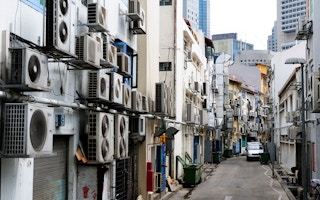Experts are estimating that global emissions this year will fall by 5.5 per cent of the global total in 2019—the largest ever fall in the last century—due to a drastic reduction in human activities as a result of the ongoing Covid-19 pandemic.
While the planetary breather is the largest ever fall in emission levels in the last century, it is still nowhere near getting us to the 2-degree Celsius target nations committed under the Paris Agreement on climate change.
But we don’t have to wait for a pandemic to take responsibility for our own carbon footprint.
In Singapore, a new carbon footprint calculator has been launched by SP Group, one of the largest energy utilities companies in Asia Pacific. The tool helps consumers build awareness of their carbon footprint and suggest ways that they can reduce it.
Called My Carbon Footprint, which can be accessed online or via the SP Utilities App, this calculator takes into account individuals’ utilities consumption (electricity, water and gas usage) and their lifestyle choices for a comprehensive overview of their carbon emissions.
“
But we don’t have to wait for a pandemic to take responsibility for our own carbon footprint.
The average Singaporean generates over 8 tonnes of carbon emissions annually, more than twice the world’s average, and more than four times the target to maintain a sustainable footprint. To put this figure into context, more than 400 rain trees are required to absorb this impact on the environment.
The carbon footprint calculator allows users to benchmark themselves against their peers, by considering the carbon expenditure of their daily activities according to household profile, mode and duration of commute, frequency of holiday travel, spending habits and food consumption.
As people stay at home to curb the spread of Covid-19, many are engaging in quarantine challenges for self-betterment. A quick survey on social media reveals that many people are exploring ways to improve themselves such as scrutinising their impact on their health and the environment.
Here are some simple ways to reduce your own emissions:
1. Cultivating easy energy-saving habits starts at home
Over the past decade, Singapore’s household electricity consumption has increased by about 17 per cent, according to the National Environment Agency.
Households in Singapore consumed a total of 7,295 GWh (gigawatts hours) of electricity in 2018, which equates to each home spending around $1000 per year on their electricity bills.
Your monthly energy bill can be reduced with daily actions that go a long way and require little effort.
- Opt for your fan and natural ventilation since air-conditioners are huge energy guzzlers.
- Replace old appliances with energy-efficient ones that don’t suck up unnecessary energy. The extra upfront costs will prove to be a good investment with a lower energy bill.
- Unplug your devices when not in use to avoid “vampire power”. Even if they’re turned off, electronic devices suck energy once they’re plugged into a socket.
- Take shorter showers and consider switching to a water-saving showerhead. This reduces both your energy and water consumption.
2. Cutting down on travel and commute
Pre- and post-Covid-19 days, reconsidering how much and how often you travel is one of the most effective ways to reducing your carbon footprint.
For many Singaporeans, flights may make up the biggest chunk of their carbon footprint. Flying emits 285g of carbon dioxide per kilometre, exceeding 158g by road and 14g by rail for each passenger.
- Cut down on unnecessary flights.
- If you can’t avoid flying, choose to fly with companies that provide the option of offsetting your carbon footprint.
- Embrace a car-lite society and explore Singapore’s world class transportation system.
- Chalk up your Fitbit steps or try biking around!
3. Rethinking food and other consumption
The current pandemic presents an opportune time to rethink our consumption habits—both food and material goods. Food production accounts for about a quarter of total carbon emissions globally.
The World Resources Institute highlighted in a report that without limiting the global rise of meat consumption, the amount of carbon dioxide emitted would make keeping the increase in global warming to 1.5 degrees Celsius impossible.
On top of what you eat, what you buy could also be contributing to a high carbon footprint. Buying less or adopting a minimalist lifestyle is just the first step.
- Reduce your meat consumption, especially red meat like beef, goat and lamb.
- Stay away from “fast fashion” and invest in quality products that last. While the items may be stylish and cheap, there are hidden environmental and social costs that aren’t taken into account.
- Vote with your dollar by purchasing from companies with low carbon footprints.
- Consider buying and selling preloved items. This helps reduce your overall waste, which contributes to your carbon footprint too.
Through tracking and reducing your carbon footprint with these easy steps, everyone can play a part in achieving Singapore’s climate targets.
You can begin by accessing My Carbon Footprint on the new webpage or the SP Utilities App, regardless of your electricity retail provider or meter type.









